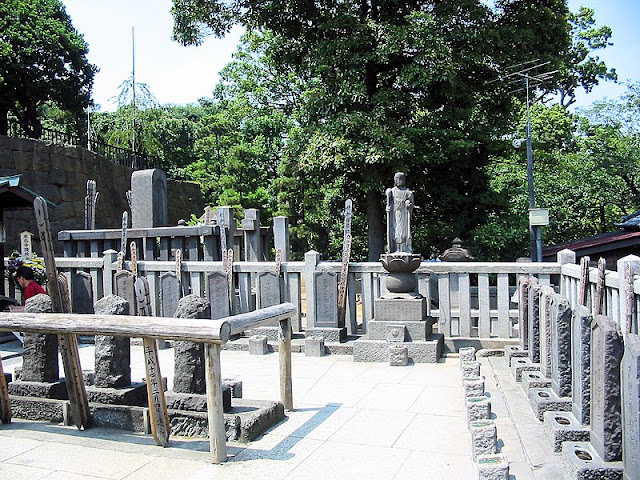-----------ooOoo-----------
March 20, 1703:
Ronin seppuku (Ako Incident).
Those who have seen the Keannu Reeves movie ’47 Ronin’ will know the story. Likewise the dissertation by a character in the great Robert de Niro film ‘Ronin’. (One of the best car chases you will see, rivalling the car chases in Bullitt and Blues Brothers 1).
The tale of the forty-seven ronin, also known as the Ako incident or Ako vendetta, is perhaps Japan‘s most famous historical legend, which tells of a group of samurai after their daimyō (feudal lord) Asano Naganori was compelled to perform seppuku (ritual suicide) for assaulting a powerful court official (kōke) named Kira Yoshinaka, after the court official insulted him.
Asano‘s death had left his 300 samurai retainers as ronin, masterless warriors who were expected by custom to follow their lord in death. Many did so, but a group of 47, led by Asano‘s chief councillor Oishi Kuranosuke, secretly swore an oath to avenge their master by killing Kira. This was no small matter – revenge had been explicitly forbidden by the shogunate, and the ronin knew they would be signing their own death warrants by defying the law.
To throw off suspicion, the ronin dispersed and took up new lives as merchants and tradesmen. Oishi himself began frequenting brothels and taverns in Kyoto, feigning dissipation to make Kira‘s spies believe he had given up any thought of revenge. The ruse worked, and after nearly two years, Kira let down his guard.
On December 14, 1702, the forty-seven ronin regrouped and made their move. Armed with swords and bows, they stormed Kira‘s mansion in Edo, fighting through his guards and retainers. They found Kira hiding in a shed and offered him the chance to die honourably by his own hand, but he was too frightened to act. The ronin beheaded him, then marched with his head to Asano‘s grave at Sengaku-ji temple, where they laid it as an offering.
The rōnin, on their way back to Sengaku-ji, are halted in the street, and invited in for rest and refreshment.
The forty-seven ronin surrendered themselves to the authorities, fully expecting to be sentenced to death for their crime. The shogunate was in a bind – the ronin had technically broken the law, but their actions were widely celebrated by the public as a righteous act of loyalty and honour. In the end, the shogun compromised by allowing the ronin to die honourably by seppuku rather than as common criminals. All 47 did so willingly on March 20, 1703, and were buried at Sengaku-ji alongside their master.
This true story was popular in Japanese culture as emblematic of loyalty, sacrifice, persistence, and honour (qualities samurai follow called bushidō) that people should display in their daily lives.
Statues of the famous 47 ronin in the Oishi Shrine, Ako, Japan
-----------ooOoo-----------




No comments:
Post a Comment
Note: Only a member of this blog may post a comment.